When is it appropriate to make a kitchen with a mezzanine?
If we briefly describe the advantages of a kitchen with cabinets up to the ceiling (we will discuss the pros and cons in more detail later), the first thing that comes to mind is the spaciousness + visual increase in the height of the room. Accordingly, it is necessary to build a kitchen up to the ceiling in:
- small-sized apartments – to increase the storage area of a linear kitchen;
- houses with low ceilings – to stretch the room upward;
- studio apartments – to reduce the area occupied by the furniture.
Your case does not apply to any of the above? You can still order stylish tall cabinets!
The biggest question regarding a three-level kitchen is what to store on the mezzanine, how to get the necessary items from them? It is logical to use the upper cabinets for something rarely used: food supplies, formal dinnerware, seasonal items (for example, canning utensils). In houses with high ceilings (more than 3 meters), for convenience, a ladder on wheels is installed, which can be easily moved to the desired module. In other cases, a stepladder or a stool will do.
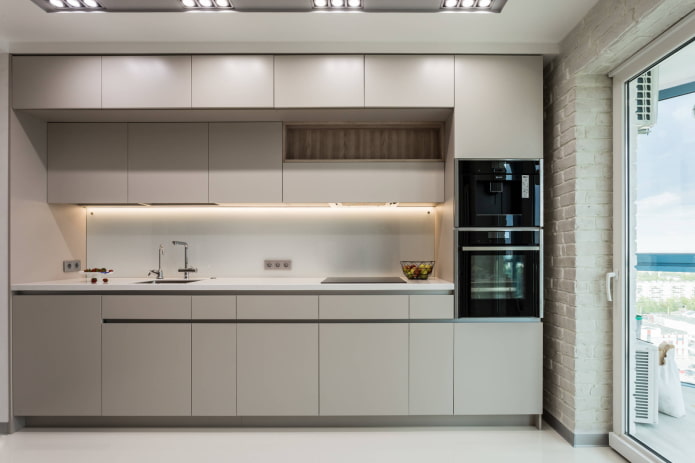
The photo shows a kitchen with a tall unit and cabinets to the ceiling
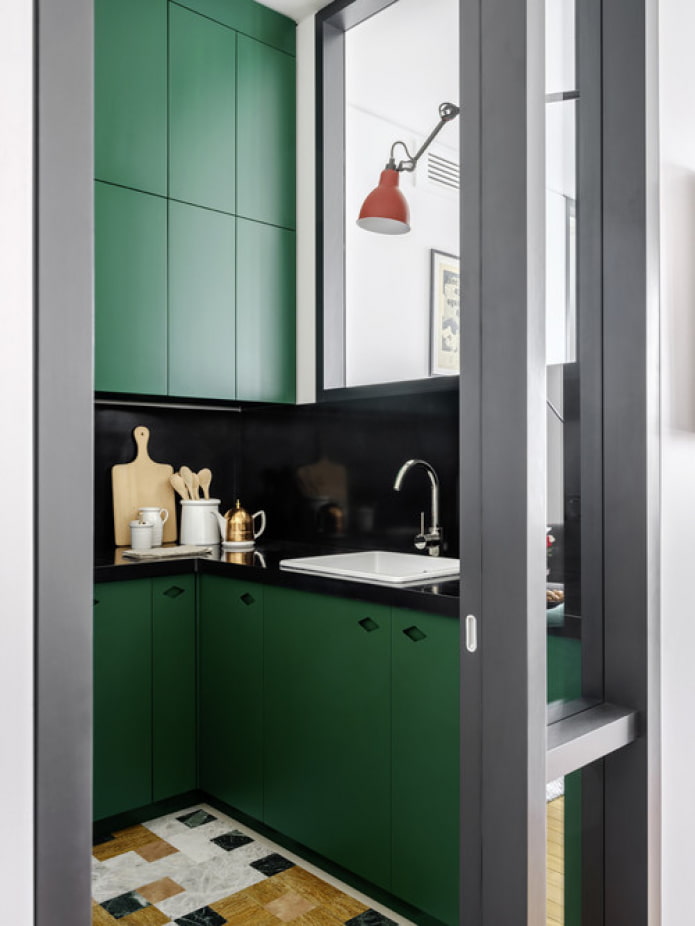
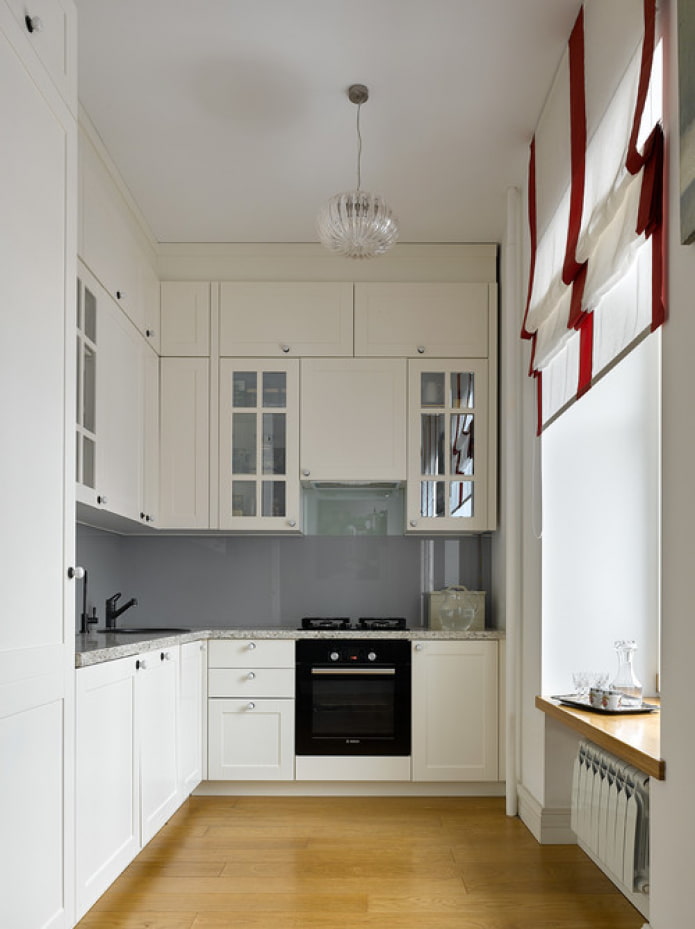
Planning to make a kitchen up to the ceiling, but are afraid that it will look “heavy”, bulky? Use the following techniques:
- Glossy light (white, beige, gray) facades increase the space.
- Coating in the color of the walls allows you to “dissolve” the furniture in the room.
- Bright lighting will switch attention from the furniture.
- Contrasting (brown, red, blue) middle row of modules will make the upper one invisible.
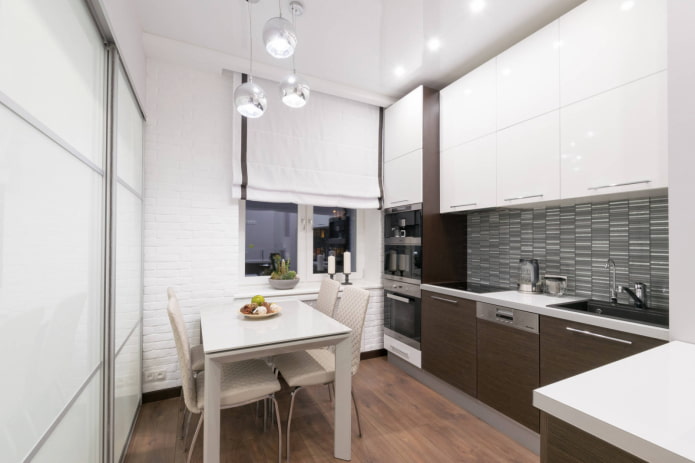
What to consider when choosing such a kitchen?
The development of any design project begins with an assessment of the architectural features of the room, the kitchen is no exception. 3 nuances that are worth paying attention to:
- Location of the ventilation hole. Will it be covered by cabinets? This is acceptable for a flow-through hood with a pipe to the ventilation (which will be conveniently hidden behind the facades). But in the case of an open hole, it is not advisable to hang a cabinet there.
- The ability to open the doors. You can’t just draw the upper modules flush with the ceiling, you risk getting kitchen cabinets that don’t open. There should be at least 2-3 cm between the ceiling and the top of the facade – the exact size of the gap depends on the opening method.
- The right color scheme, a minimum of decor. Looking at modern kitchens up to the ceiling, you most likely won’t see handles. This is done so as not to overload the space with unnecessary items, because there are a third more doors in such a set. Can’t do without handles? Take the most inconspicuous models or paint them the same color as the facades. The color scheme of tall cabinets depends on the size of the kitchen: the more spacious the room you need as a result, the lighter and more neutral the color scheme should be.

The photo shows closed and open tall cabinets with wood-like doors
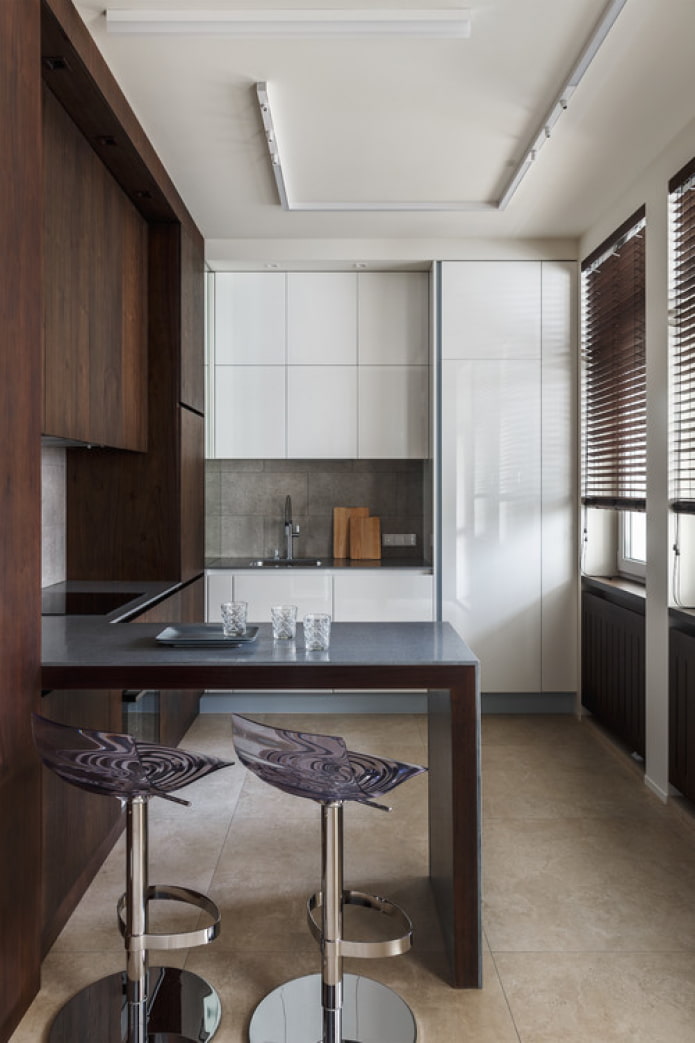
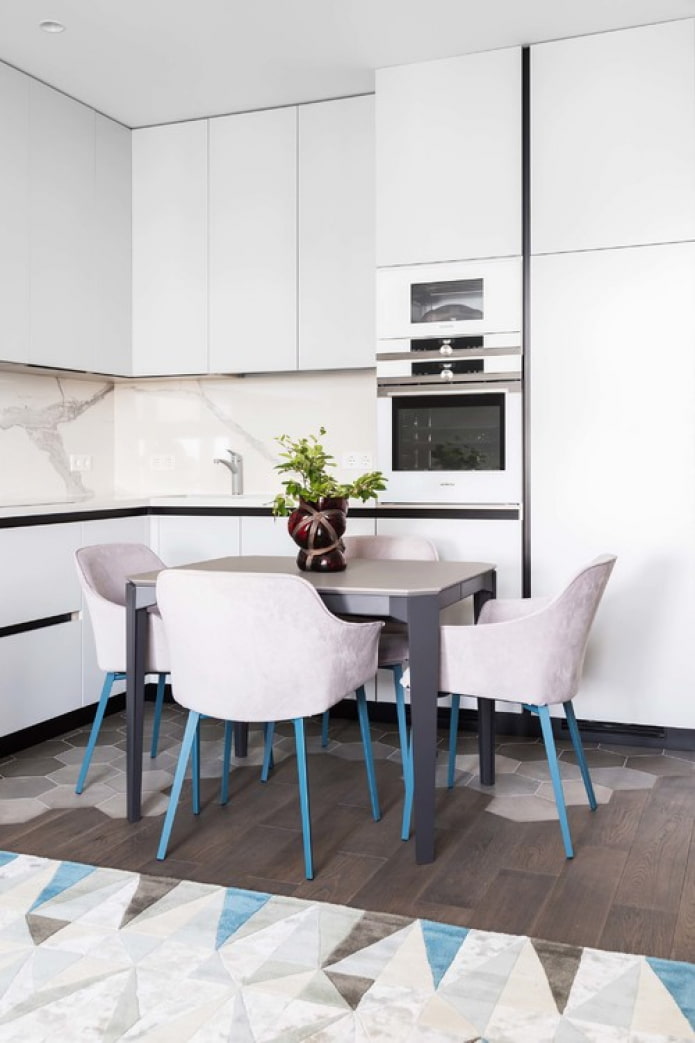
Kitchen designs with ceiling-high cabinets can be:
- Two-tier. The classic option with two rows of tall cabinets. To achieve harmony, order furniture of the same width. The rows can be on the same level or different: the upper storage spaces are made the same depth as the lower ones, and the middle row is “recessed” inside.
- Single-tier. From the outside, it looks like several modules stretched out lengthwise. This design looks lighter and visually raises the ceiling. Floor-standing. That is, it consists of several columns from floor to ceiling. Most often, a monolithic structure is an addition to the main set.
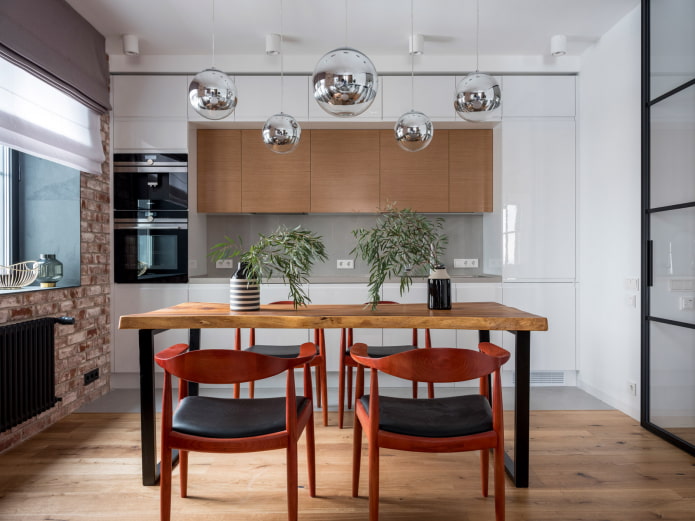
The photo shows a straight glossy set
Pros and cons
Design with furniture up to the ceiling is an ambiguous concept. Let’s look at both sides of the coin.
Advantages:
- Capacity. Even a small kitchen up to the ceiling is very spacious, additional storage will come in handy for storing a large supply of things.
- Hygiene. Due to the lack of a gap between the ceiling and the cabinets, dirt does not accumulate on their surface.
- Savings on finishing. You won’t need to wallpaper or paint the entire wall behind the set (except for open shelves).
- Increase in height. Verticals will visually stretch the room in length and raise the ceiling.
- Minimalism. You will get rid of visual noise by hiding all the kitchen utensils behind the doors. The room will always look clean.
Disadvantages:
- High price. This applies to furniture and preparatory finishing: you don’t have to wallpaper the back, but the ceilings must be perfectly flat.
- Heavy load. You can’t install two rows of kitchen cabinets on a plasterboard wall; you need a more serious structure.
- Possibility of clutter. Since people rarely look at the mezzanine, most of the things stored there are not really needed at all.
- Complexity of installation. Trust kitchen installation only to professionals, otherwise you risk getting crooked, poorly fitted furniture.
- Hazard of injury. You have to constantly climb up to get the thing you need, there is a chance of falling down the stairs one day, twisting your ankle or dropping something on yourself.
Filling options
There are 3 types of kitchen units with cabinets up to the ceiling:
- Open. Strictly speaking, these are not cabinets at all, but shelves. Keeping them clean is very labor-intensive.
- Closed. We have already mentioned that facades give the room a neat look. They can be the same or differ depending on the tier. Blind doors are usually installed at the top, and in the middle you can change them to glazed ones or choose a different color, material.
- Combined. The topmost floor remains blind, open shelves are located in the center. This option looks lighter than a closed one, and it is easier to keep it clean than a completely open one.

The photo shows a corner arrangement of furniture
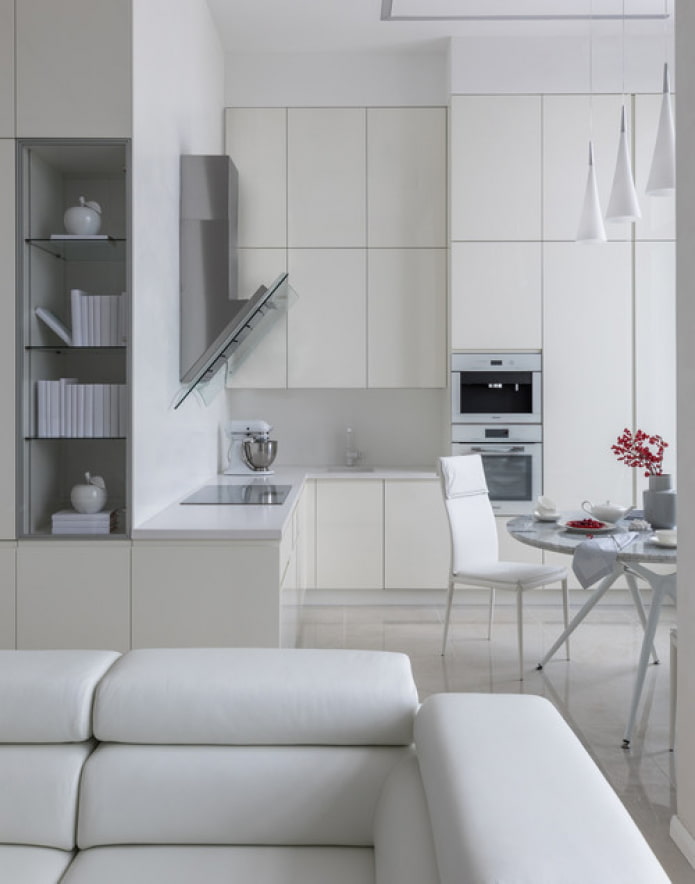
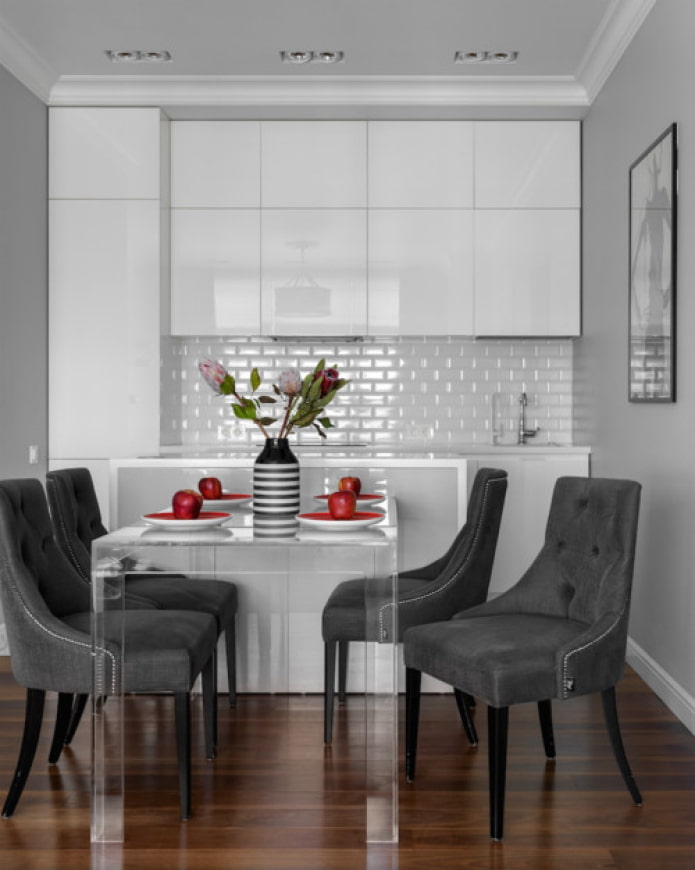
Tip: Think in advance about how you will get items from the upper shelves. You may need a stationary mobile stepladder or a compact extension ladder.

The photo shows the design of a three-level kitchen in a classic style
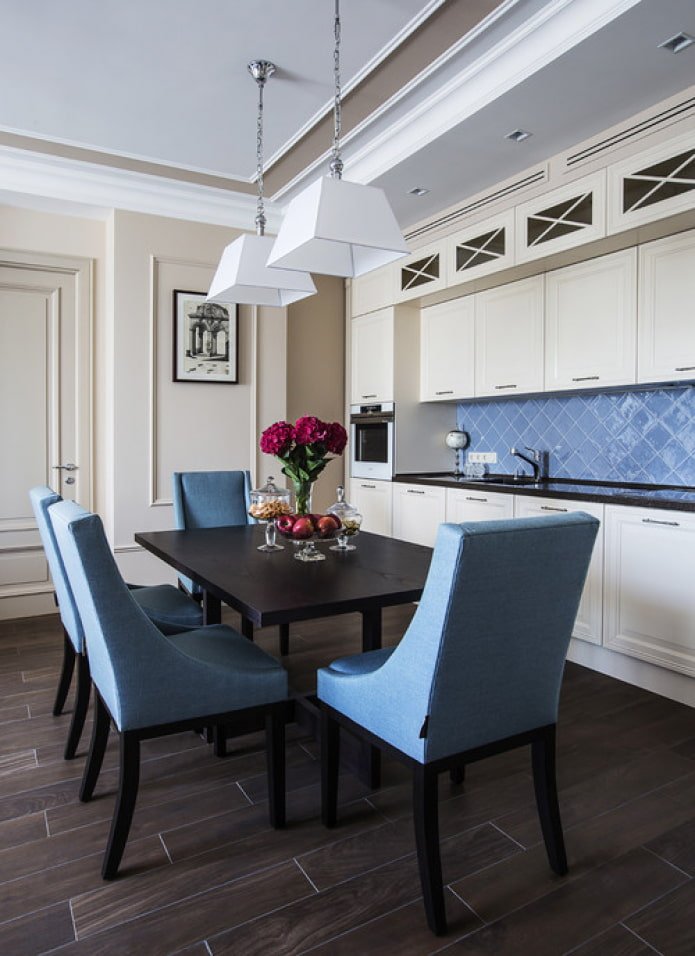
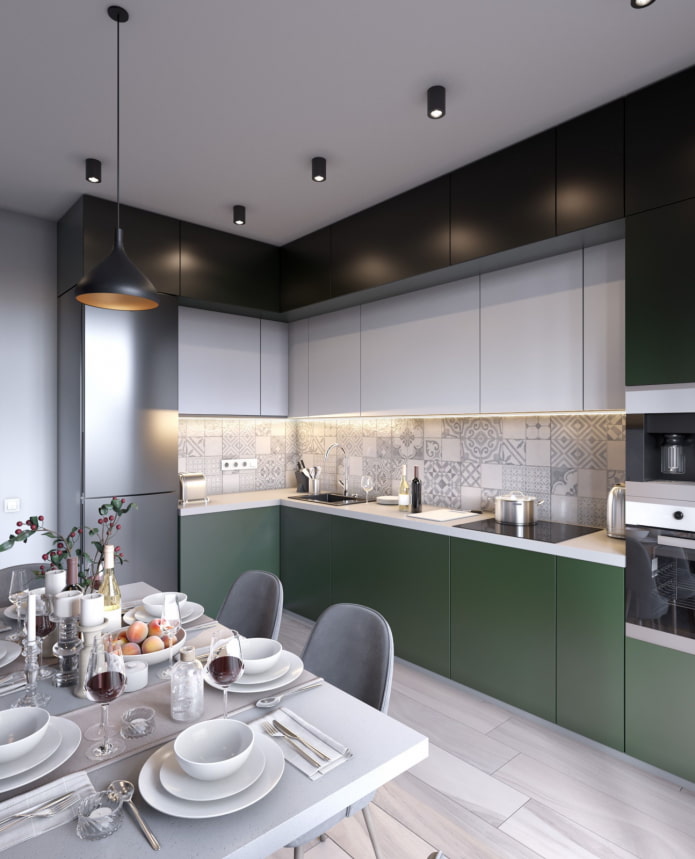
Interior design ideas
In different styles, the kitchen will look different, but there are some general recommendations:
- Cover the gap between the ceiling and the facade with a plinth, cornice or decorative strip to get a more cohesive look.
- Project the width of the cabinets to the ceiling so that the lines coincide with the lower drawers.


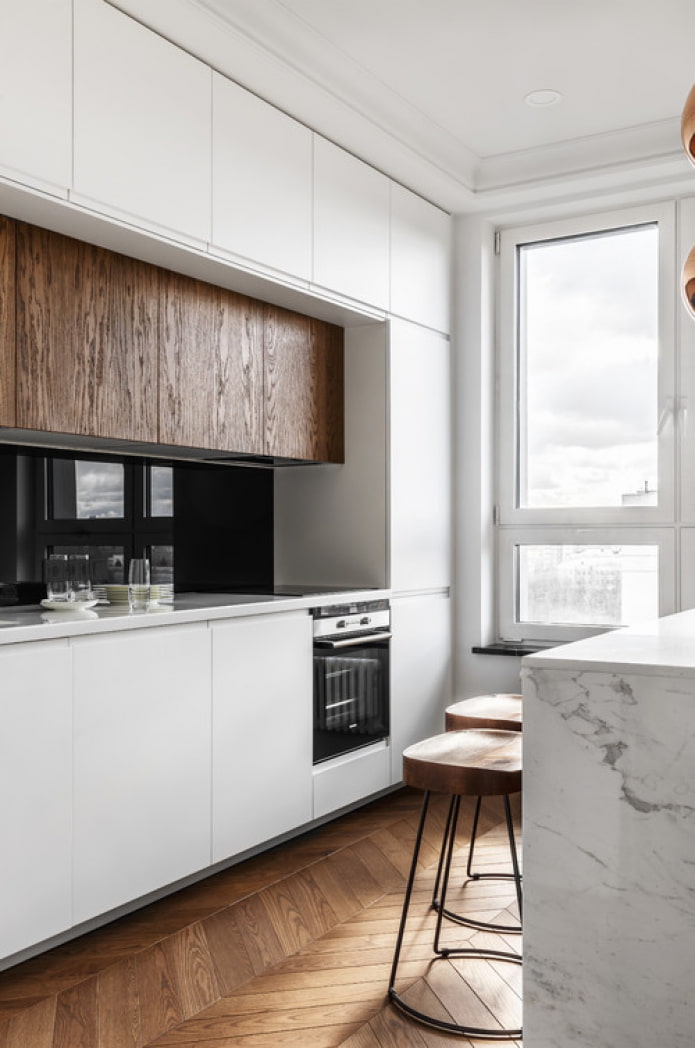
- Order the doors of one of the tiers of tall cabinets in a contrasting color for a more interesting design.
- Put an accent on the ceiling to distract from the dimensions of the kitchen set.
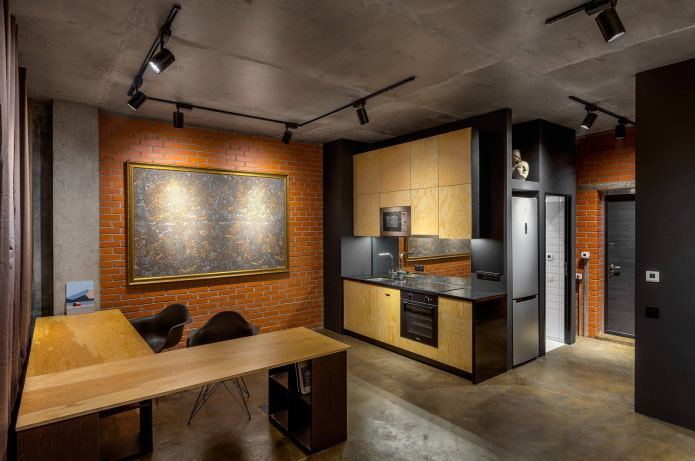

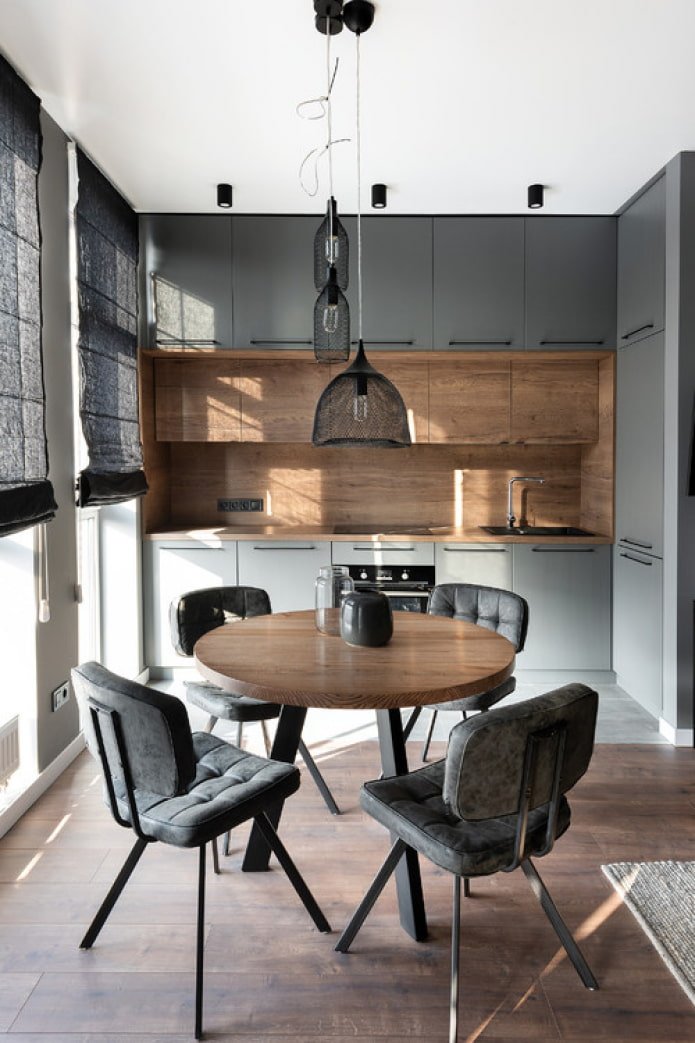
Now reading:
- Discover the Versatile Fiat Scudo Van
- Khrushchev-era apartment design: 7 examples of budget renovations and 63 inspirational photos.
- English style kitchens: 45 photos of interiors and design ideas
- Double curtains: 70+ interior ideas and photos for window decoration.
- 10 Creative Ways to Decorate Your Fridge with a Personal Touch